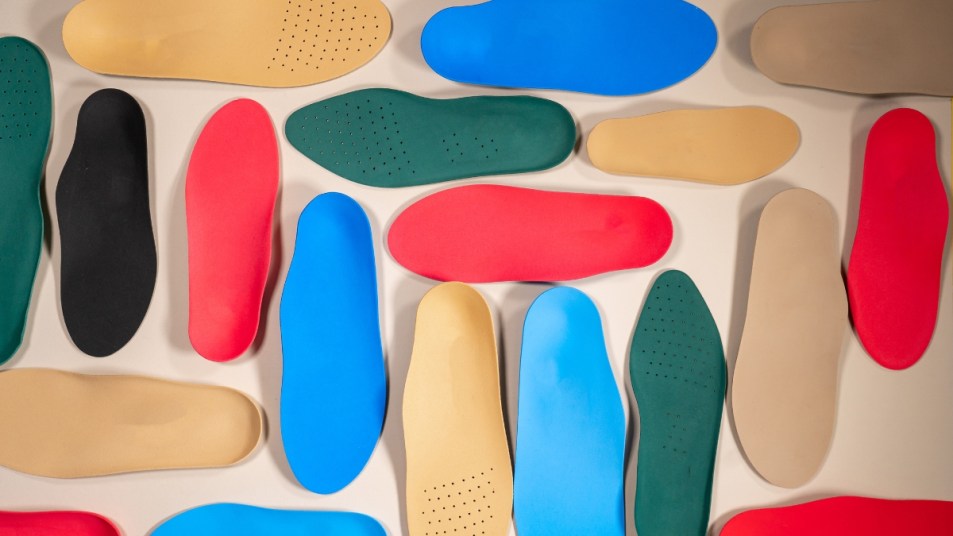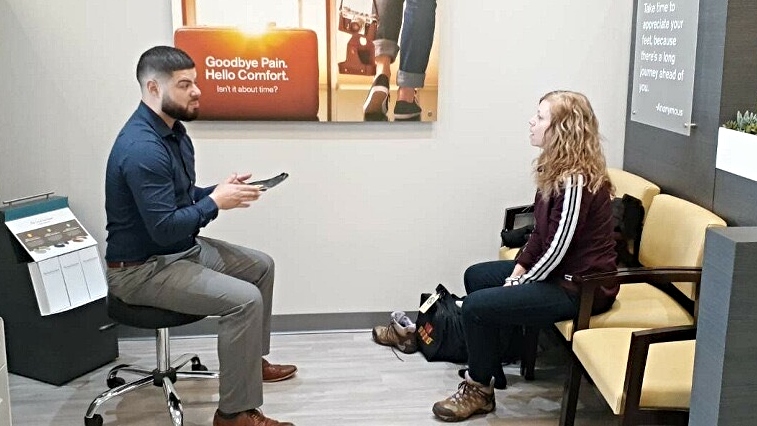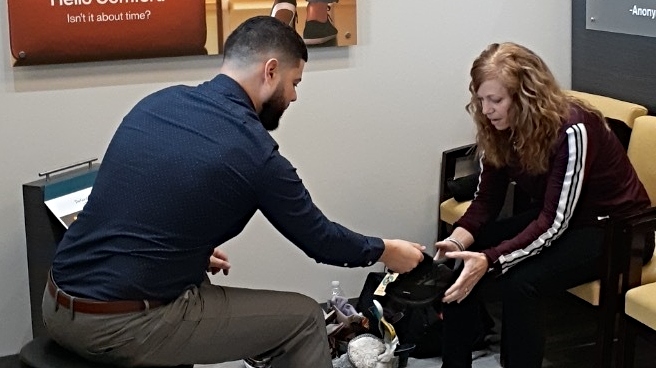Are Custom Orthotics Worth It? We Sent One of Our Readers to Find Out

Did you know that pain in your heels, ankles, toes, calves, knees, hips, and lower back can all be caused by undiagnosed foot issues? Over-the-counter orthotics can help with various conditions by correcting your gait and giving you extra support as you walk. However, wearing the wrong orthotics can intensify problems rather than correct them. If you’ve never found relief with a generic pair of inserts, it might be time to look into custom orthotics.
Custom orthotics are medical-grade shoe inserts that correct an irregular walking pattern and absorb shock. Your podiatrist may offer prescription custom orthotics, which are made using an actual mold of your foot. The mold gets shipped to a laboratory, where a technician uses it to create a custom orthotic.
But prescription orthotics have downsides. Podiatry visits can be expensive, depending on your insurance, and a single pair of custom inserts may cost anywhere between $200 and $800. In addition, you will have to buy shoes based on whether or not they will accommodate your inserts.
If you need high-quality inserts but don’t want to go down the prescription road, there is another option: The Good Feet Store. Specializing in arch support, The Good Feet Store offers personalized orthotics that vary based on activity (walking, running, and more) and the amount of support your arches need. But is this somewhat easier route worth the money? We sent First for Women reader Maury Steiner to The Good Feet Store in Lancaster, Pennsylvania to find out.
The Good Feet Store Experience
Having tested what felt like every OTC orthotic on the market, Steiner was more than ready to try a new solution. She suffers from knee, hip, groin, and foot pain, and once had plantar fasciitis (tissue inflammation that causes stabbing pain in the heel). Steiner explained all of this and more to her Good Feet Store specialist, Chris Sosa.

Sosa took an imprint of each of Steiner’s feet to measure her arch. Using the information provided along with the imprints, Sosa went to the back of the store to find three ideal pairs of pre-made arch supports.
Though the supports are pre-made, Sosa clarified that they are matched to each customer with extreme precision. “We want to get these [orthotics] measured accurately, down to a millimeter behind the metatarsals,” he explained. (The metatarsals are the five long bones in the middle of your foot.)
Sosa brought out three types of personalized arch supports for Steiner to test drive: the Strengthener, the Maintainer, and the Relaxer, as The Good Feet Store calls them. The Strengthener is designed to exercise the muscles, tendons, and ligaments in the feet and guide them into an optimal position. “The Strengthener is the only orthotic [from The Good Feet Store] that we need to adjust to,” said Sosa. “With any medical grade orthotics that you’ve worn in the past, there’s always an adjustment period, because it’s literally putting your foot into a different position.”
Sosa explained that the Strengthener can cause some discomfort at first, so he gave Steiner a wearing guide. The guide recommended that she wear the strengthener for one to two hours a day for the first week, then gradually build up the number of hours used per day. If the original Strengthener is too uncomfortable for certain customers, the store offers a gel version.
The second pair of supports, called the Maintainer, is designed to maintain the structure and strength established by the Strengthener. The Relaxer, which is the company’s gentlest form of support, offers rest for the foot when needing to take a break from the other two orthotics. The Relaxer can also be worn with sandals and slippers, unlike the other two models.

Steiner tested out all three types of orthotics in a new pair of sneakers, and said she was extremely happy with how they felt. (Why use new sneakers? The Good Feet Store specialists believe that they eliminate any issues your current shoes may be causing. As such, the store has sneakers available for use as customers test out orthotics.)
The Pros and Cons
While Steiner loved her experience at the Good Feet Store, she noted that there were several potential downsides. Firstly, the arch supports are expensive, coming out to about $450 or $400 for each set of orthotics (prices may vary depending on the style of the insert and the location of the store). Each pair also comes with a separate set of cushions, which cost about $25. Insurance is not likely to cover these costs, though customers may use FSA and HSA accounts to make purchases. Customers can also make payments on a monthly basis. In addition, Steiner added, you won’t see a licensed podiatrist when you visit The Good Feet Store.
However, Sosa stated that he often takes care of customers who were referred to his store by podiatrists. Many podiatrists refer their patients because they know that The Good Feet Store will give them more options in terms of personalized arch supports. And though some online sources state that a pair of prescription orthotics costs between $200 and $800, Sosa said that some patients pay as much as $800 to $1,000 for a single pair of prescription orthotics.
Chief marketing officer of Good Feet Worldwide Ben Cohen added that the store has its own medical advisors. “We have two medical advisers on staff,” he said. “One of them is a leading orthopedic surgeon, Dr. Pamela Mehta, and then we have a podiatrist, Dr. William Spielfogel. Both of them are nationally renowned, medical practitioners.”
Two other standout differences? Convenience and flexibility. With over 200 stores nationwide, The Good Feet Store allows customers to visit any location to address concerns with their arch supports, no appointment needed. And because the supports are separate from the cushions, customers can replace the cushions cheaply as they wear out. The actual arch supports last about eight to 10 years, and come with a lifetime warranty.
As for Steiner, she is thrilled with her orthotics and the customer service. Halfway through the month, a specialist at the store called her to follow up and ask her how she was doing. She used the opportunity to explain a few of the issues she had, which the specialist addressed.
“I have been wearing them religiously!” Steiner said. “I often wear the strongest one to work, exercise in the medium one, and wear the light ones in my slippers. I love them! Good support for my high arches.”
Bottom line? Personalized arch supports won’t replace OTC orthotics, which fill an important niche in the market. If you can resolve your foot issues with a $40 insert, then you shouldn’t have to spend more money. These arch supports also won’t replace podiatrists, who can properly diagnose different ailments and conditions. But if you need more flexibility in terms of product options, The Good Feet Store may be the way to go.
This article is not sponsored by The Good Feet Store. The Good Feet Store provided all products mentioned in this article at no cost to our reader.
















